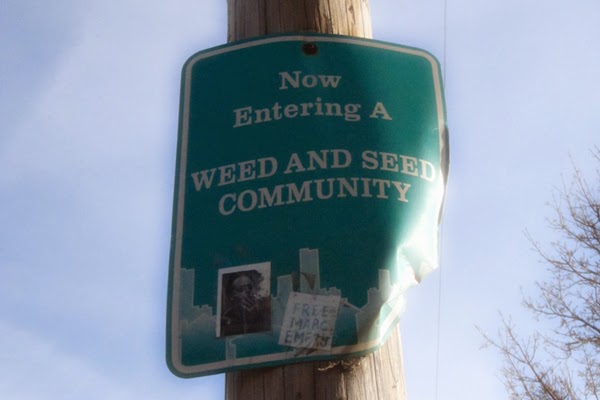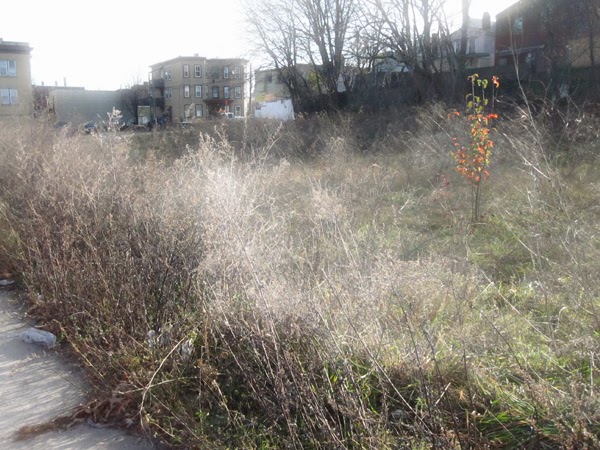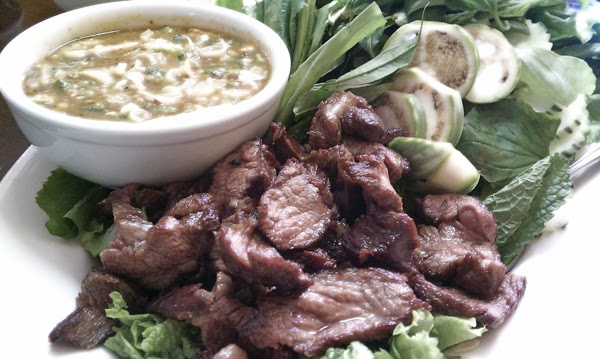 Bridge over the Pawtucket Canal
Bridge over the Pawtucket Canal
Sometimes, I feel like I exaggerate my high school years and victimize myself, blaming everyone else for my misery, angst, and loneliness (remember that 30 Rock episode where Liz Lemon goes back to her high school reunion…except, I’m sure I wasn’t that much of an asshole). Going back to Lowell has always felt like I was reliving those memories—those awkward high school years. I do my best to avoid relatives, classmates, etc. But I do leave room to visit a few good friends who have remained an aspect of my root and future.
This time around I went home with a guest, weary and nervous of their good opinion. I gave a bleak description of Lowell, the projects, the gangs, drugs, etc. It was much of a disappointment as the city has cleaned itself well (not 100% but on the mend). But going back as a visitor, I’m always surprised to hear the historical side and the changes the town is looking forward to.

Sign in the scary neighborhood I used to live in
As home to 106,000 people, the fourth largest city in Massachusetts and the second largest Cambodian community in the US, Lowell is a sleepy town caught in the shadow of Boston. Remnants of mills and smokestacks line the cityscape, many of which have been converted into condominium lofts. It isn’t quite a town nor is it a city. It takes less than a day to walk from either ends. Downtown area still has cobblestoned roads, the sidewalks lined with elegant 19th century streetlights which are decorated with wreaths with the upcoming winter festival. The area is much more bustling in the evening than it is in the morning—nary a soul walks around before noon on a weekend.

The Highlines have nothing to this! And they didn’t even have to hire a millionaire landscape designer to design this.
It houses some famous people, Jack Kerouac, James Abbott McNeill Whistler (here’s a link to his painting), Paul Tsongas, Ed McMahon, to name a few.

Kerouac Sculpture Park
There’s a free trolley ride with the National Park at 2:30 PM on the weekend where you can learn the history of Lowell and its canal. With a couple of friends, I went on this tour to learn how Lowell in the 1800s harnessed the power of the Merrimack River right at the natural Pawtucket Falls (later re-enforced by men to deliver water into manmade canals). I grew up knowing that its founder, Francis Cabot Lowell, with his photographic memory stole the loom design on his trip to London and brought it back to start the industrial revolution in America, bringing cotton from the South and the mill girls from the northern farms.

The door ajar is actually a painting to this Mill Girls & Immigrants Exhibit
Aside from the boom and decline of the Industrial Revolution and influxes of refugees and government assistant, Lowell is struggling to maintain some sort of semblance and have some sort of stronghold. Since the mills no longer work, and the canals are privately owned, the city is lined with picturesque waterworks. These canals run through wheels under converted mills, sometimes rushing gushes of water operated by locks and gauges. With the canals and a very drinkable water system, the city could possibly look forward to a new revolution—environmental and clean energy. Unfortunately, the canals are already owned by a private hydraulic company. It would be interesting to see what jobs it could create locally and internally if they converted the usage of water as a hydroelectric and actually maintain a self-sustained city.

Look how the water gushes through the locks of the canal!
After a long but short day traveling around Lowell, I was glad to have some traditional Cambodian food. And of course, some family time. Lowell to me is a getaway to see my family but it doesn’t call to me like New York City. It’s a home away from home.

Simply Khmer Restaurant. Steak Tuk Pra-hok (Mudfish sauce). So stinky but so delicious and spicy!
